There is a common misconception, which dates back to the sixteenth-century Vite of the Tuscan artist and biographer Giorgio Vasari, that Jan van Eyck invented oil painting. Oil painting as a technique for painting wood statues and other objects is much older, and Theophilus (Roger of Helmarshausen?) clearly gives instructions for oil-based painting in his treatise, On Divers Arts, written in 1125. It is however true that the van Eyck brothers were among the earliest Early Netherlandish painters to use it for very detailed panel paintings, and that they achieved new and remarkable effects through the use of glazes, wet-on-wet and other techniques. Thus, because of his early mastery of the technique, he was traditionally known as the "father of oil painting."
Jan van Eyck has often been linked as brother to painter and peer Hubert van Eyck, because both have been thought to originate from the same town, Maaseik in Limburg (Belgium). Another brother, Lambert van Eyck is mentioned in Burgundian court documents, and there is a conjecture that he too was a painter, and that he may have overseen the closing of Jan van Eyck's Bruges workshop. Another significant, and rather younger, painter who worked in Southern France, Barthélemy van Eyck, is presumed to be a relation.
As a painter and "valet de chambre" to the Duke, Jan van Eyck was exceptionally well paid. His annual salary was quite high when he was first engaged, but it doubled twice in the first few years, and was often supplemented by special bonuses. His salary alone makes Jan van Eyck an exceptional figure among early Netherlandish painters, since most of them depended on individual commissions for their livelihoods. An indication that Van Eyck's art and person were held in extraordinarily high regard is a document from 1435 in which the Duke scolded his treasurers for not paying the painter his salary, arguing that Van Eyck would leave and that he would nowhere be able to find his equal in his "art and science." The Duke also served as godfather to one of Van Eyck's children, supported his widow upon the painter's death, and years later helped one of his daughters with the funds required to enter a convent.
The theme of the Arnolfini Portrait was used in an episode of the Russian satirical TV show Kukly to depict Russian President Vladimir Putin wearing an outfit of the painting's male character with whom Putin apparently shares facial features. The episode shows Putin's Russia as being stuck in the darkness of the Middle Ages with Putin, who lives in a secluded medieval castle, ruling the country with an iron fist, manipulating and oppressing people by means of nationalistic propaganda and Inquisition. Since 2002 the show is banned in Russia.
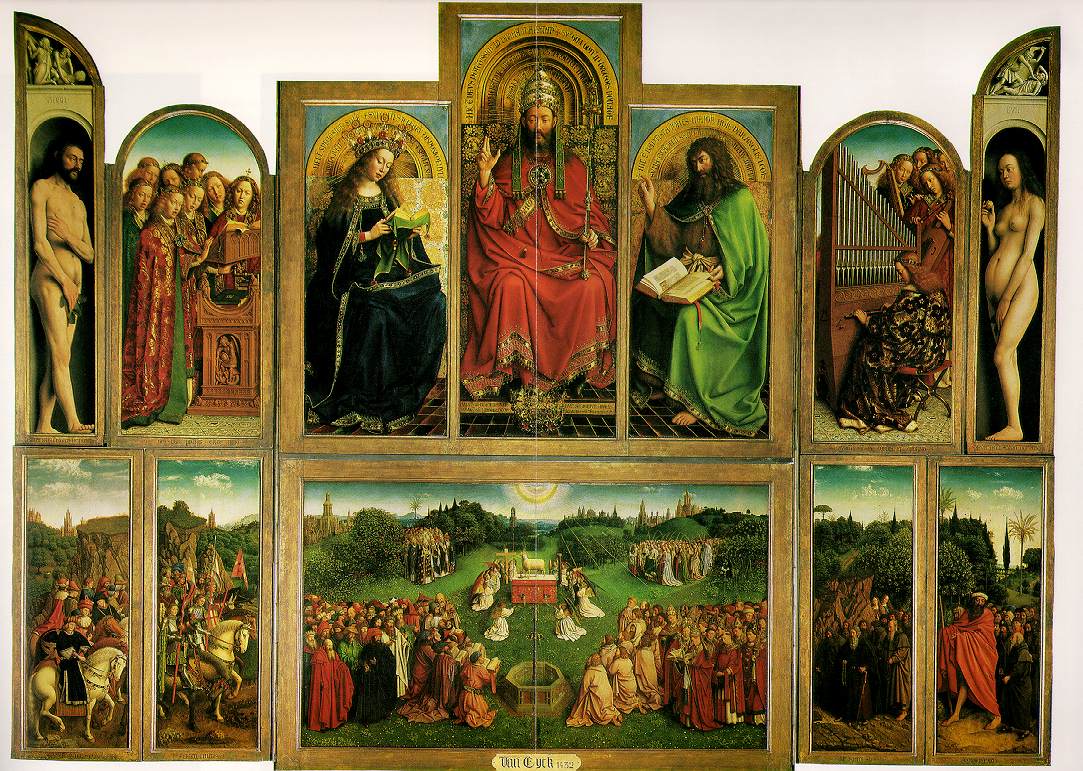
WebMuseum: Eyck, Jan van: The
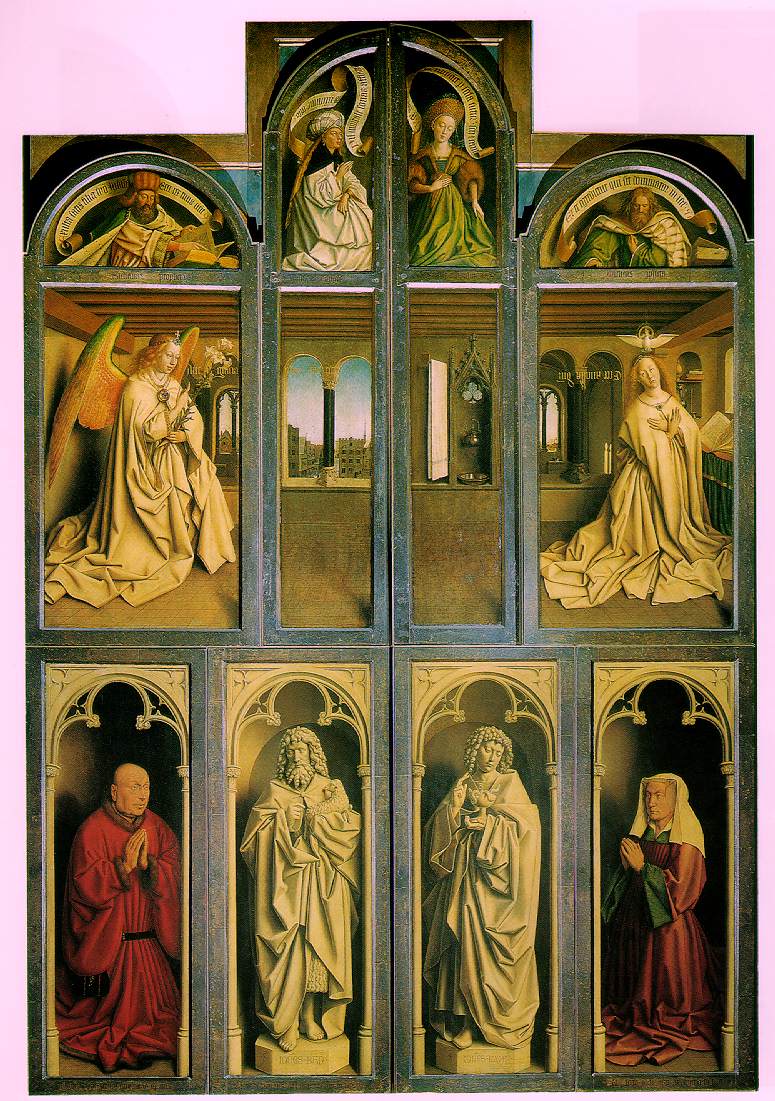
(altar wings closed)

Jan van Eyck The Ghent

by Jan van Eyck

Ghent, Belgium, Jan van Eyck11
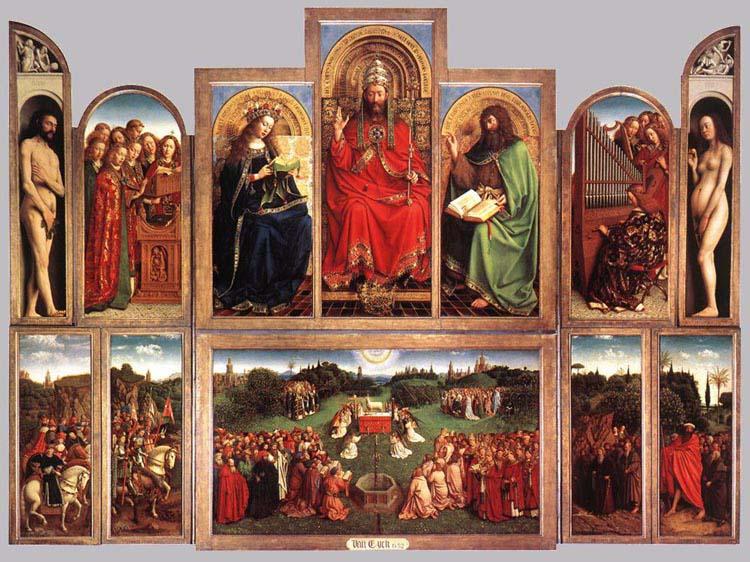
Jan Van Eyck The Ghent

The Ghent Altarpiece - Jan van
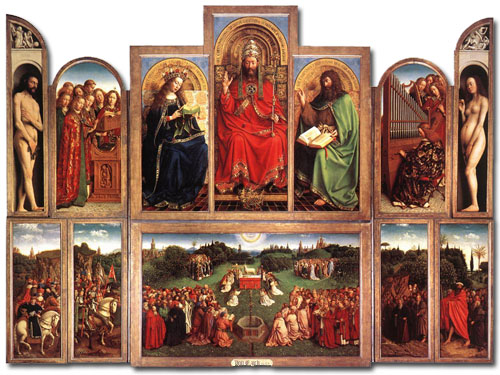
Jan van Eyck\x26#39;s Ghent Altar
.jpg)
a(n) Eyck Jan van paintings
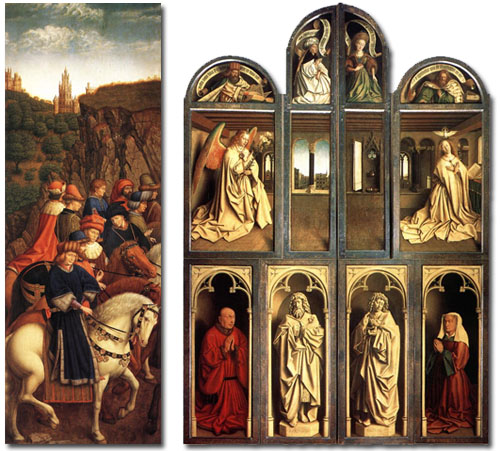
Jan van Eyck\x26#39;s Ghent Altar

Jan Van Eyck, Ghent altarpiece

The Ghent Altarpiece: The
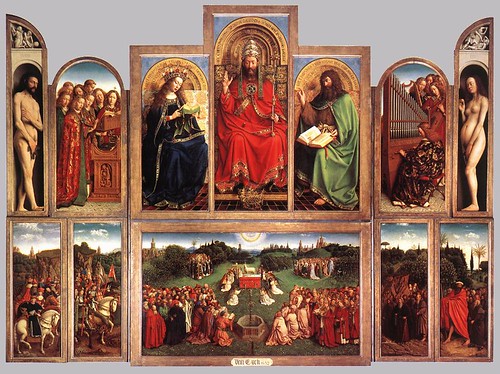
Jan van Eyck, Ghent Altarpiece

Ghent Altarpiece, Jan Van

The Ghent Altarpiece:
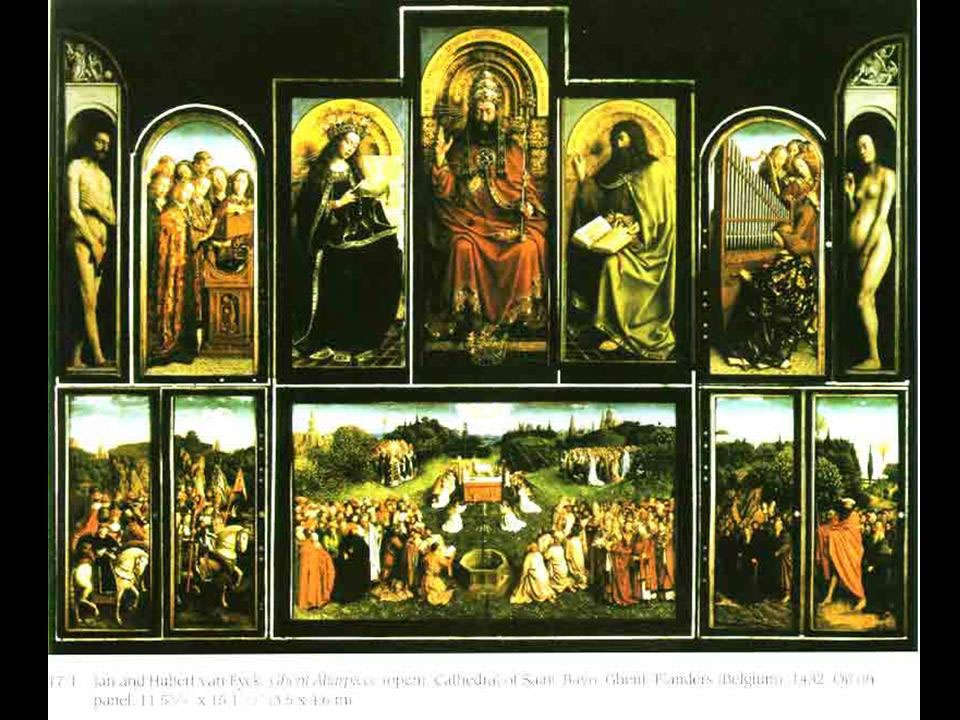
jan Van Eyck The Ghent
Jan van Eyck has often been linked as brother to painter and peer Hubert van Eyck, because both have been thought to originate from the same town, Maaseik in Limburg (Belgium). Another brother, Lambert van Eyck is mentioned in Burgundian court documents, and there is a conjecture that he too was a painter, and that he may have overseen the closing of Jan van Eyck's Bruges workshop. Another significant, and rather younger, painter who worked in Southern France, Barthélemy van Eyck, is presumed to be a relation.
As a painter and "valet de chambre" to the Duke, Jan van Eyck was exceptionally well paid. His annual salary was quite high when he was first engaged, but it doubled twice in the first few years, and was often supplemented by special bonuses. His salary alone makes Jan van Eyck an exceptional figure among early Netherlandish painters, since most of them depended on individual commissions for their livelihoods. An indication that Van Eyck's art and person were held in extraordinarily high regard is a document from 1435 in which the Duke scolded his treasurers for not paying the painter his salary, arguing that Van Eyck would leave and that he would nowhere be able to find his equal in his "art and science." The Duke also served as godfather to one of Van Eyck's children, supported his widow upon the painter's death, and years later helped one of his daughters with the funds required to enter a convent.
The theme of the Arnolfini Portrait was used in an episode of the Russian satirical TV show Kukly to depict Russian President Vladimir Putin wearing an outfit of the painting's male character with whom Putin apparently shares facial features. The episode shows Putin's Russia as being stuck in the darkness of the Middle Ages with Putin, who lives in a secluded medieval castle, ruling the country with an iron fist, manipulating and oppressing people by means of nationalistic propaganda and Inquisition. Since 2002 the show is banned in Russia.

WebMuseum: Eyck, Jan van: The

(altar wings closed)

Jan van Eyck The Ghent

by Jan van Eyck

Ghent, Belgium, Jan van Eyck11

Jan Van Eyck The Ghent

The Ghent Altarpiece - Jan van

Jan van Eyck\x26#39;s Ghent Altar
.jpg)
a(n) Eyck Jan van paintings

Jan van Eyck\x26#39;s Ghent Altar

Jan Van Eyck, Ghent altarpiece

The Ghent Altarpiece: The

Jan van Eyck, Ghent Altarpiece

Ghent Altarpiece, Jan Van

The Ghent Altarpiece:

jan Van Eyck The Ghent
No comments:
Post a Comment